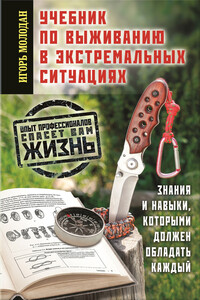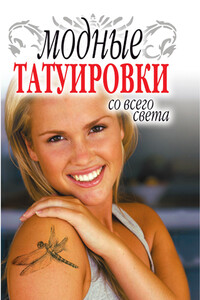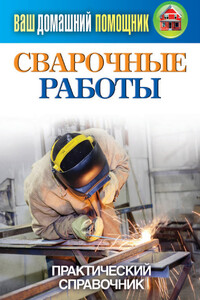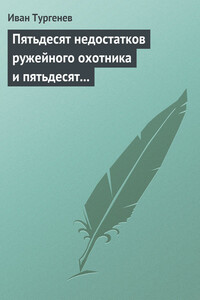Современная магия - [3]
Some effects, using props common in the Victorian era but uncommon today, have also disappeared. It is interesting that the most common image of a magician is a man pulling a live rabbit from a top hat, yet this feat, almost never seen today, was effective in the nineteenth century because the magician could borrow a top hat from any gentleman in his audience. The fact that it was a borrowed hat made the production of rabbits (and often other unlikely articles such as cannonballs, bird cages and lighted Chinese lanterns) a truly amazing effect. Today few people, save magicians, carry top hats, and a contemporary audience might suspect (perhaps correctly) that the hat containing the rabbit is just another trick magician's prop.
There is another popular area of magic that has been almost completely transformed, in terms of technique, since Professor Hoffmann's time. This is the vast field of card magic. Unquestionably, more technical literature has been published on card magic in the last century than on any other area of magic; the number of books, large and small and in all languages, runs into the thousands.
In Hoffmann's day, the «Pass» (Sauter la coupe), following the dictates of the great Robert-Houdin, was the most important sleight in all card magic. Today, partly because it is extremely difficult to do undetected and because so many effective substitutes (totally unknown in Hoffmann's time) have been invented, it no longer occupies such a central position in card technique. This is not to say that this classic sleight, in the hands of such contemporary card experts as Charles Miller or Derek Dingle, is not powerfully deceptive, but simply that it is no longer the backbone of card conjuring. Through the writings and inventive talents of such men as S. W. Erdnase (whose classic Expert at the Card Table was published in 1902), and such contemporary card geniuses as Dai Vernon and Ed Marlo, the entire technique of card magic has changed, with literally hundreds, perhaps thousands, of new sleights and subterfuges invented over the past hundred years. While the techniques have changed radically, however, many of the classic effects remain the same and are still in use today; a great number date back to before the time of Hoffmann to the great Viennese card magician Johann Nepomuk Hofzinser (1806-1875), and perhaps even before.
An interesting inclusion in Hoffmann's chapter on card sleights is instructions on how to throw a card. While not strictly a magic effect, the throwing of playing cards later became a feature in the performances of many major stage magicians like Howard Thurston and Maurice Raymond, who hurled cards from the theater stage to the highest reaches of the top balcony. One of America's cleverest card magicians of today, Ricky Jay, has revived the old feat of card throwing and includes it as a regular feature in his act, and has even written a book on the subject.
Since the publication of Modern Magic, two specialized types of magician that were minor figures on the magic stage a century ago have moved into the limelight. One is the illusionist, the magician who specializes in spectacular feats using people and large animals. This type of magician rose to prominence in the era of vaudeville and the music halls, when magicians were required to perform in large theaters where more intimate magic would not be effective. Such master magicians as Herrmann, Kellar, Thurston and Blackstone in America, Maskelyne and Devant in England, and Carter, Raymond, Nicola and Levante touring the globe brought large-scale stage illusions to enthralled theater audiences. The tradition of the grand illusionist remains with us today in the spectacular performances of Doug Henning, Harry Blackstone, Jr., and Siegfried and Roy. The other new breed of magician to rise to prominence has been the mentalist, or mindreader, with such names as Alexander, Annemann and Dunninger prominent. (It was Dunninger who first realized the effectiveness of presenting mental magic on radio and, later, on television.)
Both illusions and mentalism are represented in Modern Magic, with explanations of such early illusions as the Sphinx, the Cabinet of Proteus and the Aerial Suspension, as well as an explanation of feats of so-called clairvoyance and second sight. Nevertheless, it is doubtful that Professor Hoffmann realized what prominence they would achieve in the world of magic after the publication of his book. But above all, perhaps, mention should be made of his neglect of the escape, from handcuffs, ropes, boxes and other containers. Houdini, perhaps the best-known magician, of all time, made a specialty of this now-classic trick-and the whole subject is never once mentioned in the Professor's treatise.
So a great deal has changed in magic since 1876; but in its exposition of many of the classic effects still being performed, Modern Magic continues to be of particular interest to the present day magic performer. The Egg Bag, the Chinese Rings, the Rising Cards, the Ring on the Stick and, the oldest known magic effect, the Cups and Balls, are all explained in detail. To this last classic effect, described by Professor Hoffmann as «the groundwork of all legerdemain,» an entire chapter is devoted. True, there have been some changes in Cups-and-Balls technique over the last century (the use of the servante has largely been replaced by the performer working from his coat and pants pockets), but basically the teaching in this chapter remains as solid a grounding in this great effect as one could find. And Hoffmann's strong beliefs on the fundamentals of magic performance are as valid today as when they were first penned: «The ideal entertainment, from the point of view of the spectator, will be one in which feats of dexterity, or supposed dexterity, are worked in conjunction with brilliant stage effects of a more spectacular kind.» This prophetic realization describes with uncanny accuracy the approach of most of the major magicians since that time.

Эта книга повествует о наиболее заметных проблемах, с которыми сталкиваются в современных США как родившиеся здесь, так и переселившиеся в страну иностранцы.Весьма полезно прочесть её и тем, кто готовится к переезду за океан. Знание местных реалий позволит жителю другой страны своевременно избегать неприятных для него ситуаций и даст возможность чувствовать себя уверенно в Северной Америке.

Опыт показывает, что любой из нас, зачастую против своей воли, может оказаться в ситуации, в которой ему не на кого рассчитывать и любой ценой нужно продержаться, не важно – несколько часов до рассвета или несколько дней, недель, месяцев до прихода помощи. Вы узнаете, как обеспечить себя водой, пищей, теплом зимой и укрытием от жары летом. Автор дает проверенные на собственном опыте советы и убедительно доказывает, что для выживания в любых условиях нужно не так уж много – желание выжить, определенные знания и уверенность в своих силах.

В настоящее время существует множество способов подчеркнуть собственную индивидуальность, создать свой стиль. И одним из таких способов является татуирование. Многообразие татуировок позволяет подобрать рисунок по своему вкусу, выбрать тату своей мечты, а специалисты по нанесению татуировок помогают приблизить эту мечту к реальности. Однако, чтобы нанести модное тату на кожу, не обязательно обращаться к мастеру. Все правила татуирования изложены в данной книги. Кроме того, в ней вы найдете по меньшей мере 100 стильных и оригинальных рисунков тату.

Книга станет полезной для кролиководов-любителей. Советы и рекомендации по содержанию, разведению, правильному кормлению кроликов, проведению племенной работы помогут вам вырастить здоровых и крупных животных, получить в большом объеме качественную продукцию: мясо, меховые шкурки и кроличий пух.Для широкого круга читателей.

Это издание – великолепное практическое руководство как для новичков, так и для опытных мастеров. На его страницах вы найдете пошаговые рекомендации и подробные описания всех этапов данного вида работ, познаете тонкости и нюансы сварного дела.

Источником для создания заметки о недостатках ружейного охотника и легавой собаки послужил собственный опыт Тургенева, страстного охотника. Возможно писатель учел и «Записки ружейного охотника Оренбургской губернии» С. Т. Аксакова, в частности, главу «Легавая собака», в которой перечислялись достоинства легавой собаки и советы охотникам для усовершенствования в стрельбе. Известно, что Тургенев одним из первых высоко оценил «Записки ружейного охотника».